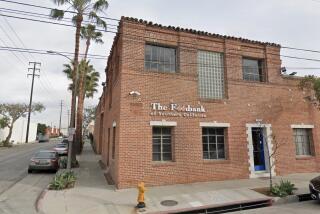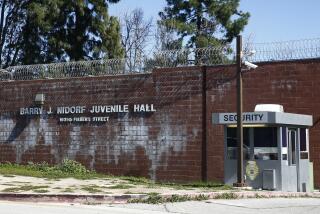Checking Out Ways to Keep the Library System Healthy : Volunteers Can Do Only So Much to Offset Budget Cuts
These are tough times for most of Orange County’s public libraries, which should be troubling news for everyone who cares that children learn to love reading and their parents have access to the latest information.
The county-run public library system has seen its budget shrink from $27 million in 1991 to $20 million now. In the next fiscal year, which starts in July, it will likely dip still further, to $19 million. That cut of one-third from the peak figure has taken its toll on employees and thus on service given to patrons. It also has reduced the number of books and magazines available on the shelves.
One solution that city and county officials would be wise to consider is formation of a joint powers authority. A similar governing body was put in place over the Orange County Fire Department after the bankruptcy. It could very well save money.
A joint powers authority is one of the options that was suggested by a consultant who made a four-month study of the system. County Librarian John M. Adams wisely requested the examination, and the Board of Supervisors agreed. The results were made public last week.
The library system’s woes began before the bankruptcy. Several years ago Sacramento legislators shifted money from special districts and libraries to education. After two consecutive years of those shifts, the county began closing some of its 27 branches three days a week.
A remarkable community effort after the bankruptcy helped not just to stem the decline in library hours, but reverse it. The number of hours devoted to the libraries by volunteers soared 70%. Adams said the total is about 100,000 hours a year of donated time. It was a magnificent response to preserve a major asset of Orange County.
But volunteers can do only so much. Trained librarians have to be at the helm, and because of budget cutbacks more layoffs could be in store.
As the county libraries became more bare-bones, some patrons began turning to libraries run by the cities of Huntington Beach, Santa Ana and Newport Beach. The increased numbers and financial troubles of their own led Huntington Beach to charge nonresidents $20 a year for a library card; Santa Ana charges $45 annually. Newport Beach fortunately declined to charge nonresidents. Its library system is a jewel, with a budget of about $51 per resident per year, compared with the county library’s $14 a year.
Mission Viejo, too, deserves credit for promising to keep the new library it is building open to all comers after pulling out of the county system last year.
Another proposal has been breaking the county library system into smaller groupings in different parts of the county and letting cities within each region govern them. Or cities already running their own libraries could take over branches near them.
Whatever the outcome, the key goal is service to the community. The libraries have run literacy programs and stocked their shelves with ever more books in Spanish, Vietnamese and the languages of other residents whose numbers have increased greatly in Orange County in recent years.
Computer systems give readers a quick update on which books are at which branches and when they are likely to be available. That economy of scale is one argument in favor of a countywide system and against having individual cities run their own libraries.
America’s library system owes much to Andrew Carnegie, a Scottish immigrant who made his fortune in steel and wrote in “The Gospel of Wealth” that after becoming wealthy, a rich man should distribute the surplus for the general welfare. That he did, donating more than $350 million around the turn of the century to various causes, including the establishment of more than 2,500 libraries.
Orange County’s library volunteers have carried on in the charitable spirit. They must be encouraged to continue to help if a new system is developed to keep these community assets flourishing. And the buildings must remain friendly to schoolchildren and hospitable to the adults whose own reading skills were nurtured within the walls of the public library.
More to Read
Sign up for Essential California
The most important California stories and recommendations in your inbox every morning.
You may occasionally receive promotional content from the Los Angeles Times.









